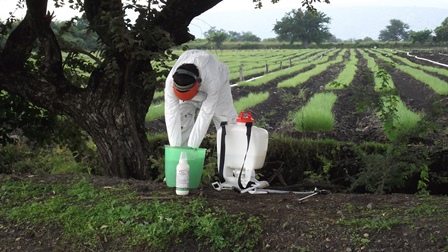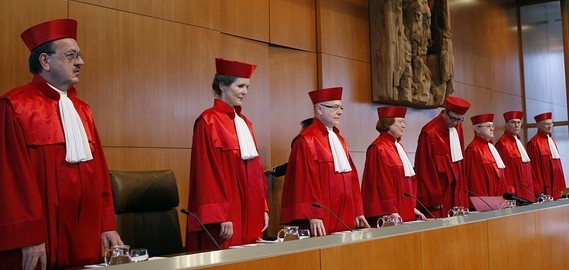Since 2009, the Superintendence of Industry and Commerce is the “National Competition Authority” in Colombia. It is a powerful entity and this was the result of years of discussions inside the Congress, as well as in judicial courts, to consolidate this Superintendence as the Single Competition Authority of our country[1].
This entity has been strengthened with an important team of economists and lawyers, and is designed to protect free competition as an administrative agency. However, this institutional design to protect free competition has been subject to variations, as a reaction to bid rigging in public tenders.
- Current institutional arrangement. The scandals in public procurement have been the driver of punitive legislation in our country: Law 1474/2011 was enacted as a reaction to the “procurement cartel” in the Capital District (Bogota D.C.) and so, bid rigging was criminalized.
For this criminal persecution, there is an institutional arrangement led by the General Prosecutor’s Office. In addition, the administrative entities exercising powers of surveillance and control (i.e., the Superintendence) have functions of judicial police, for which they have the legal obligation of reporting any “criminal news” as soon as they become aware of it, as well as of cooperating with the Prosecutor’s Office in the collection of evidentiary material[2].
In this arrangement, the Superintendence is only a supporter, but has no possibility of conducting the criminal prosecution and taking the colluders to court.
- Necessary adjustments. Recently, the “cartel of vigilantes” was discovered and two investigations were initiated simultaneously: An administrative investigation by the Superintendence, and a criminal investigation by the Office of the General Prosecutor. However, the individuals investigated in each process are not the same.
Although there is no criminal conviction for the new crime of collusion yet, a bill of law guided by the Superintendence[3] intends for this entity to have a direct criminal action to accuse the members of the cartel before the judges of the Republic.
This proposal is, on its own, neither good nor bad. Albeit, the institutional adjustment should be complete. If it is decided to amend the current institutionalism, the possibility that the SIC exercises the criminal action in a direct way will create some difficulties for businesspeople:
(i) Criminal and Administrative interrelationships: With respect to the penalties, a provision already exists in law 1474/2011 which provides an interrelationship between the administrative and criminal procedure, such that individuals fully exonerated from the fine by the Superintendence may obtain a reduction in the penalty of the criminal process.
However, other problems were not solved, such as the following:
-If an entrepreneur comes before the Superintendence as an informant (whistleblowers) but he does not receive the complete exemption of the fine, but a lower percentage, it is not provided that the Prosecutor’s Office will grant him any benefit (therefore, he risks being deprived of his liberty).
-If an entrepreneur comes first before the Prosecutor’s Office as an informant, he may pursue the application of benefits for “effectively cooperating to avoid any further crime or new crimes” and will thus avoid being deprived of his liberty in the criminal procedure, although he would not obtain benefits before the Superintendence as an informant (therefore, the infringer risks paying fines of up to 32 million USD or 150% of the profit generated by the infringement, whichever is greater, for each infringement to the competition regime).
Should the informant choose between the exoneration of the administrative fine and his liberty? The incentive for whistleblowers to be the first informant is blurred if, despite obtaining the benefits before the Superintendence he will not obtain any benefit before the Prosecutor’s Office and vice versa.
The communicating channels between both entities should be regulated so that, those cooperating effectively may obtain a preferential treatment both in the administrative and in the criminal action, regardless which authority was first contacted by the informant.
(ii) Problems with the simultaneous exercise of the criminal action: Our view has been[4] that it is not necessary to create a crime of collusion because, for a long time we have had a crime that censures the theatrical and misleading maneuvers to deceive a third party: Fraud.
In fact, criminal law states that “obtaining an illicit benefit for oneself or a third party, damaging another party, by misleading the latter through artifices or deceptions” is a crime. This is the same behavior of bid rigging, as it consists on executing an agreement in order to obtain an illicit benefit by misleading the contracting entity, presenting a situation of free competition that is barely simulated or faked, in detriment of the entity[5].
Then, there existed and still exists a criminal category which par excellence reproaches “the theater, scene, trick, chimera, fantasy, imagination, artifice, deception originated by the artifice of the agent” in detriment of the contracting party.
In said scenario, we have now two criminal offences that can be activated with bid rigging, therefore creating two inconvenient:
First, if it is intended for the Superintendence to exercise the criminal action specifically for the crime of collusion, it shall be excluded that the Prosecutor’s Office persecutes the same perpetrators for the same facts, but under other crimes such as fraud. Otherwise, nothing is being obtained other than creating a duplication of actions and generating institutional redundancy.
Second, the case of the “cartel of vigilantes” evidences the criteria disparity between the Superintendence and the Prosecutor’s Office, because for the same facts the first one is investigating 32 individuals while the second is investigating only 16. The reform must avoid that the standard to press charges is different, depending on who exercises the criminal action. Only one of the two Entities should be responsible for this criminal action.
(iii) The SIC as judicial police: In the understanding of the SIC, this Entity does not have regular judicial police functions[6], which explains why the granting of a direct criminal action is deemed necessary.
Nevertheless, there is an express regulatory provision that obliges the Superintendence to inform to the Prosecutor’s Office of every criminal news, to support the Prosecutor’s Office in the criminal investigations and leave the decision of which cases will be brought to court in the hands of the Prosecutor’s Office[7].
If the Superintendence is going to have a direct action, it must be released from its functions as judicial police for the crime of collusion, so that it may investigate and decide in an autonomous way, which cases it will bring before the courts.
(iv) Supporting personnel: In line with the foregoing, for the persecution of the conduct there must be sufficient personnel with technical knowledge in order to obtain material evidence of the conducts, to interrogate, or even to arrest the alleged perpetrators.
Having said that, the criteria of institutional specialization makes advisable that the Superintendence strengthens and grows in competition protection issues, including the criminal field. For several decades and particularly since 2004[8], Colombia has had an institutional turn to overcome the weaknesses that generated the multiplicity of competition authorities for our markets[9], because it was finally understood that competition problems have almost no particularity to deserve a different treatment and therefore, with an unsuccessful attempt in 2005 and finally with Law 1340/2009 we turned in pursuit of unification.
The Government’s position in that regard has been consistent in reinforcing and acknowledging the virtues of unifying the competition regime and in that sense, the approach of criminal prosecution for the violation of free competition should not be an exception.
[1] “Novedades de la Ley 1340 de 2009 para el Regimen de Proteccion de la Competencia.” ARCHILA PEÑALOSA, Emilio José. Magazine Contexto No. 32. Universidad Externado de Colombia. Bogota D.C. 2010
[2] Law 906 / 2004 art. 202. Resolution 0-0879/2002 of the General Prosecutor’s Office
[3] “Aumentaremos la capacidad sancionatoria”. El Espectador; Monday April 12, 2015.
[4] “¿Era necesaria la criminalización de los acuerdos colusorios?” ARCHILA PEÑALOSA, Emilio José. Revista Contexto No. 37. Universidad Externado de Colombia. Bogota D.C. 2012
[5] “Colusión en licitaciones y concursos El caso paradigmático para las entidades públicas”. ARCHILA PEÑALOSA, Emilio José and PABON ALMANZA, Camilo. Revista Contexto No. 38. Universidad Externado de Colombia. Bogota D.C. 2012
[6] Rad. 15-23164/2015
[7] Law 906/2004 art. 202. Resolution 0-0879/2002 of the General Prosecutor’s Office, second recital; articles. 1, 3 and 5
[8] Peer review OECD 2009
[9] Joint report BID/OCDE (2004). Colombia: Institutional Challenges to Promote Competition.










